Digital Camera World Verdict
The Insta360 X3 Invisible Dive Case takes the 360-degree magic of the X3 and lets you use it worry-free in deep water, down to depths of 50m. It's an essential accessory for divers, a lot of fun for all water lovers, and not difficult to use (after the first time). Sadly surface refraction means it's at its best fully submerged, but underwater it unleashes the X3's potential as never before.
Pros
- +
Works well underwater (after software update)
- +
Stitching is generally automatic, but app has options
- +
Anti-fog strips don't seem essential but are included
- +
Rugged locks
- +
Didn't let water in!
Cons
- -
The adjustable angle makes it hard to align with selfie stick
- -
Refraction means it's an 'all-in' tool
- -
A lot of force on the joint if using selfie stick
- -
Camera alignment sometimes seems slightly imperfect
Why you can trust Digital Camera World
Every action camera worth its salt offers a dive case accessory to extend it from superficial waterproofness which might do OK near the surface to something that will impress a serious diver. In that respect, the Insta360 X3 is no different. In fact, it already offered a Dive Case – now known by the software as the 2022 case – but that accessory didn't quite live up to the standards of invisibility the camera had set itself.
As a 360-degree action camera the X3 is actually two fisheye cameras fused back-to-back and, in normal operation, it can be used on the end of a wand (a so-called invisible selfie stick). This stick is ignored by the software – made "invisible" – as it records a full sphere (from which you can, subsequently, zoom and crop as you choose).
Creating a dive case that could transpose this impressive visual trick under the surface of the water was the goal of the Invisible Dive Case – one Insta360 themselves hadn't quite lived up to with their previous dive case).
The question is how well it does the job? Can you use the camera underwater?
Specifications
Water resistance: 50m (164ft)
Weight: 152g (on our scales, without camera, with fitting)
Dimensions: 155 x 84 x 84 mm
Rating: IPX8
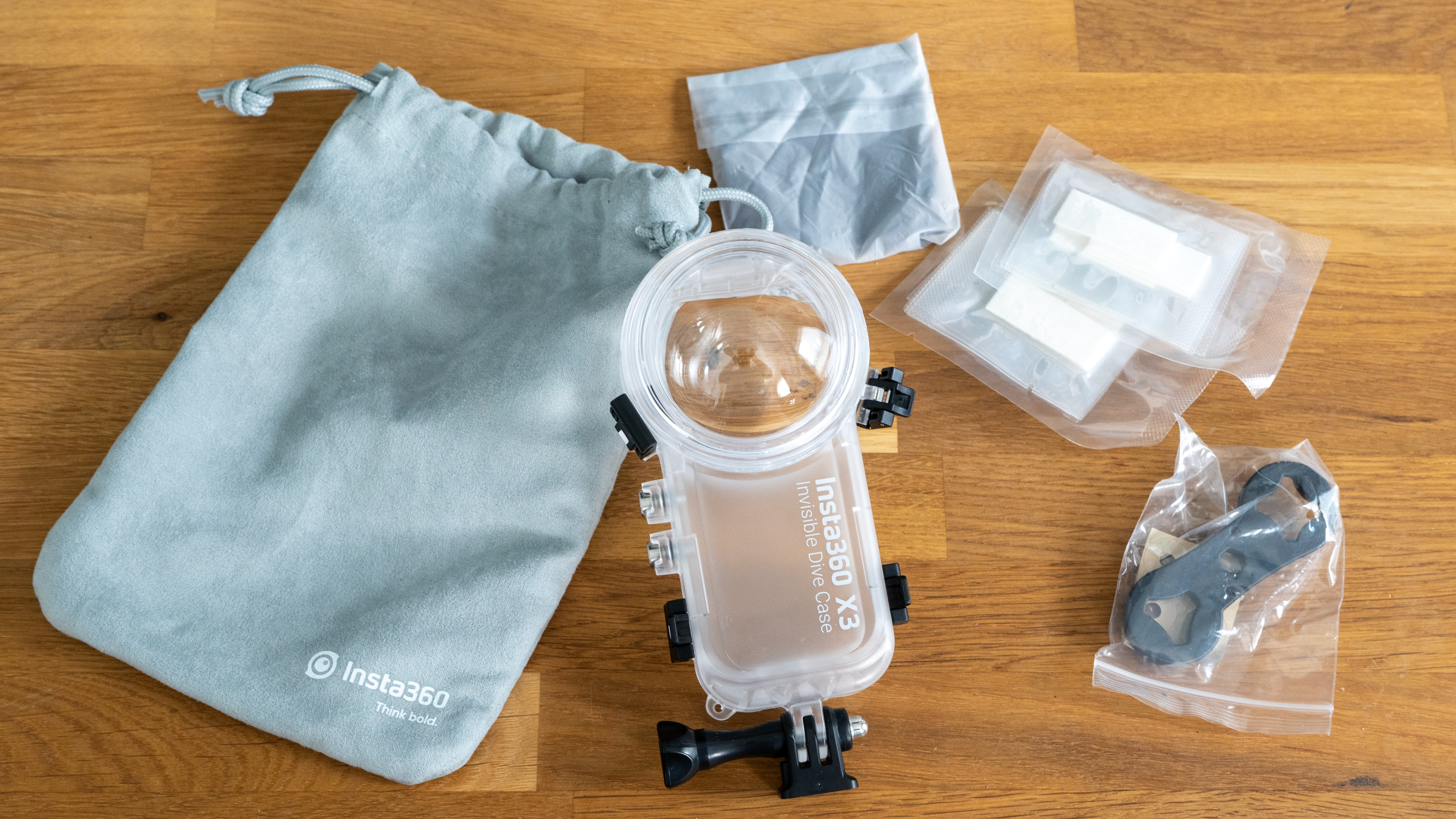
Key Features
The Dive Case is supplied in a soft bag which you'll want to keep hold of, and is made of two simple high-quality clear plastic moundlings perfect for the Insta360 X3, with four locking clips to seal it. There are just two buttons that work through the case – these become the mode and shutter buttons (borrowing the Power and 'Quick' buttons as mode and shutter buttons), making for a tidier design than the previous case.
It lets you use the camera's main shooting modes in the water via the two waterproof buttons, and can be mounted onto different handles. Most significantly, it is Insta360's first dive case which allows 360-degree shooting from the X3.
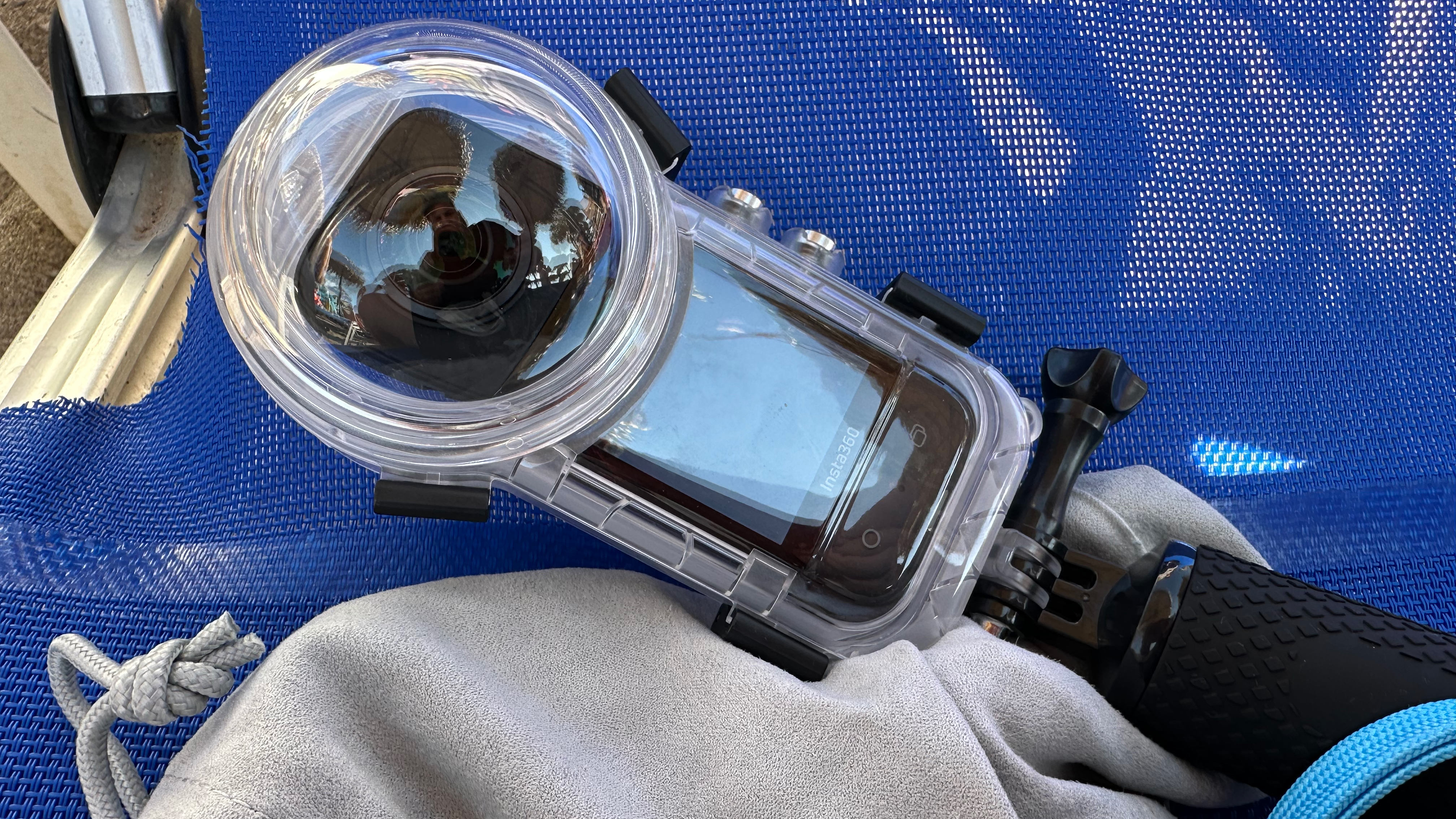
Build and handling
Using the Invisible Dive Case is a little bit more difficult than you might imagine. The first thing you need to do is ensure you've updated your Insta360 X3 to the latest version of the firmware – without this the 'dive case' mode will fail you altogether as the previous dive case had a different button layout. (I didn't plan ahead, so on my first outing I had to solve this by starting the camera recording before sealing it into the case and jumping on into the sea – not only did this leave me unable to start/stop shooting, but after about thirty minutes the camera overheated and turned itself off. I didn't make that mistake again!)
The case is also supplied with anti-fog strips which, the guidance warns, need to be placed by the side of the camera (out of sight of the lenses). Assuming you have updated the software, all you need to do is choose the Dive Case mode before you close the case (and be sure to opt for the 2023 case). From then on the two side buttons act as mode and start/stop. Straightforward enough, though life is easier if you can recognise the on-screen icons as the screen is partially obscured.
The base of the case features a screw point mount to which you can screw in other accessories, like the Insta360 Floating Hand Grip or, if you want to test its water resistance, the selfie stick. Because it's a typical action camera screw fitting it can get a little off-straight, unlike the above-ground selfie-stick which screws straight in with a 1/4"-20 thread. A 'Stabilizer Ring' helps but it's a different experience to the airborne one.
Also see our guide to the best underwater housings for cameras & phones
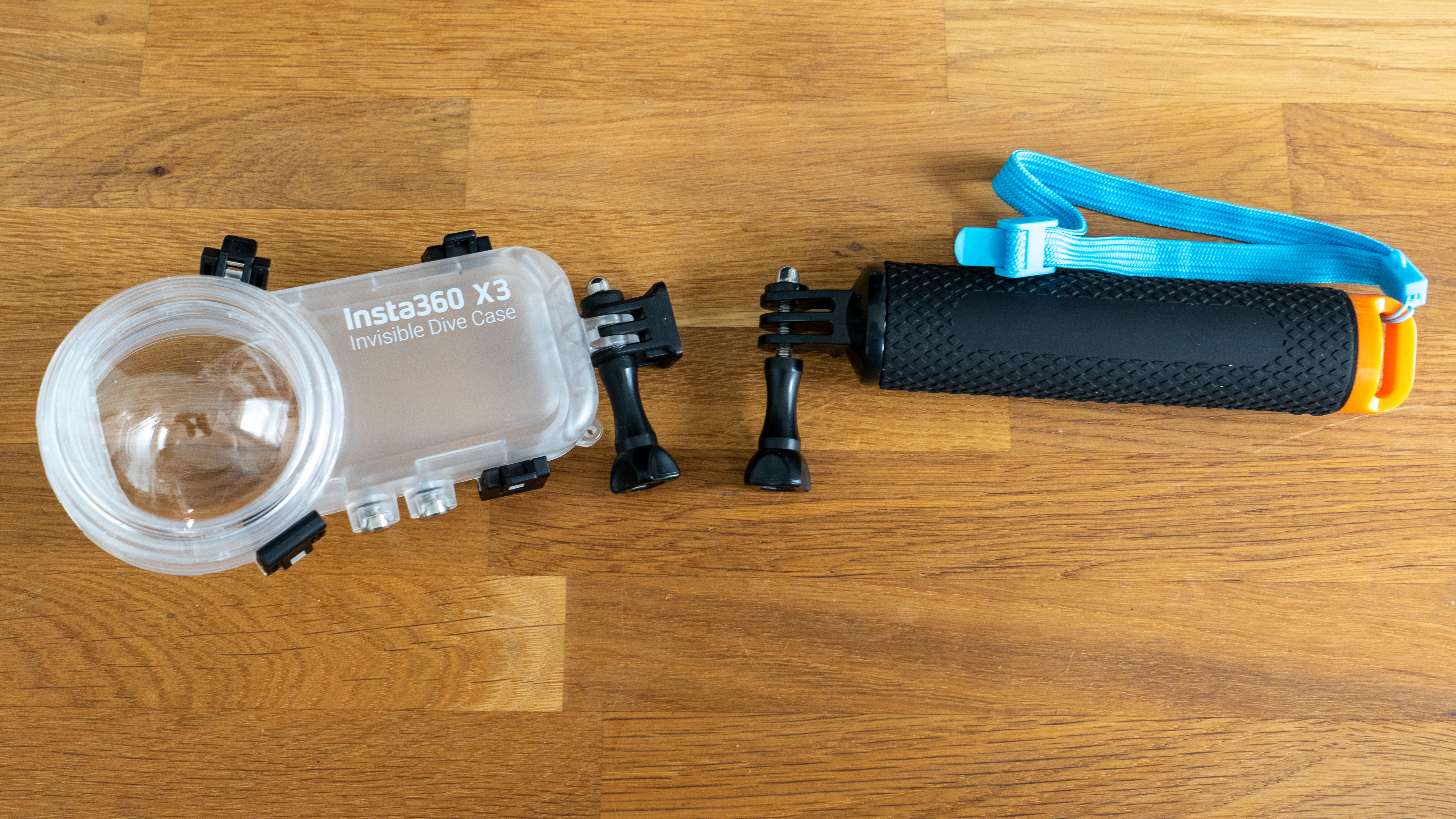
Performance
In my testing of the case – conducted not, I'm afraid, in the maximum depths, the first thing that has to be acknowledged is that it does the main job, transposing the 360-degree camera under the surface of the water. It worked in the Greek Mediterranean when held using both the selfie stick (risky, as this doesn't float, but it doesn't sink fast either!)
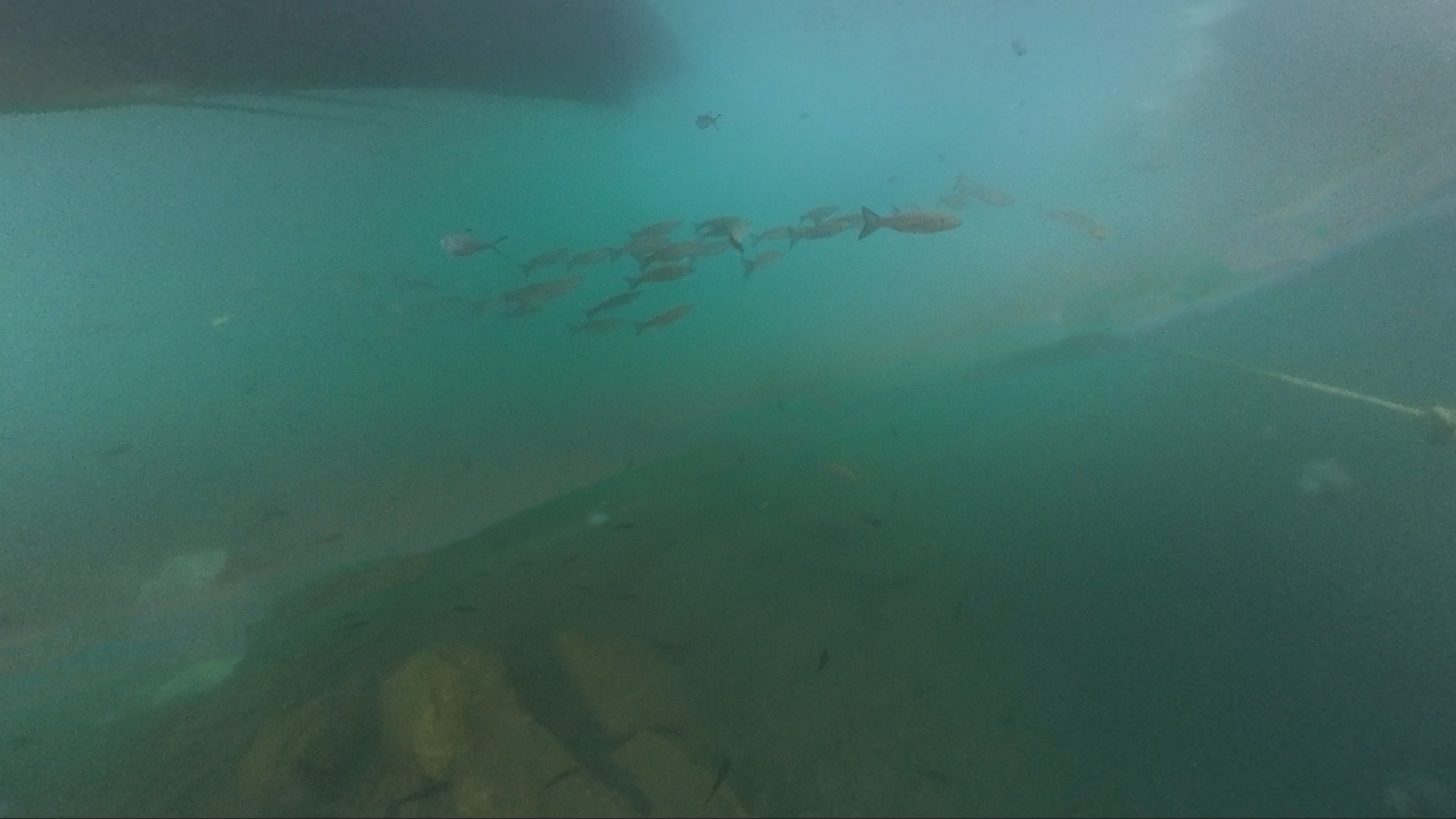
When I reviewed the footage back, it was impressive to see how little evidence of the dual-camera stitching was visible in the fully underwater imagery. I took some pictures of fish under boats in a dock and it was possible to edit the video to track them afterward just like any other Insta360 video.
Incidentally (and not directly related to this review) something Insta360 don't tell you – or, possibly, know – is that, with care, it's possible to use the telescopic Invisible Selfie Stick you may already have as a water gun – extend it underwater, then collapse it above. A lot of fun, probably not sensible.
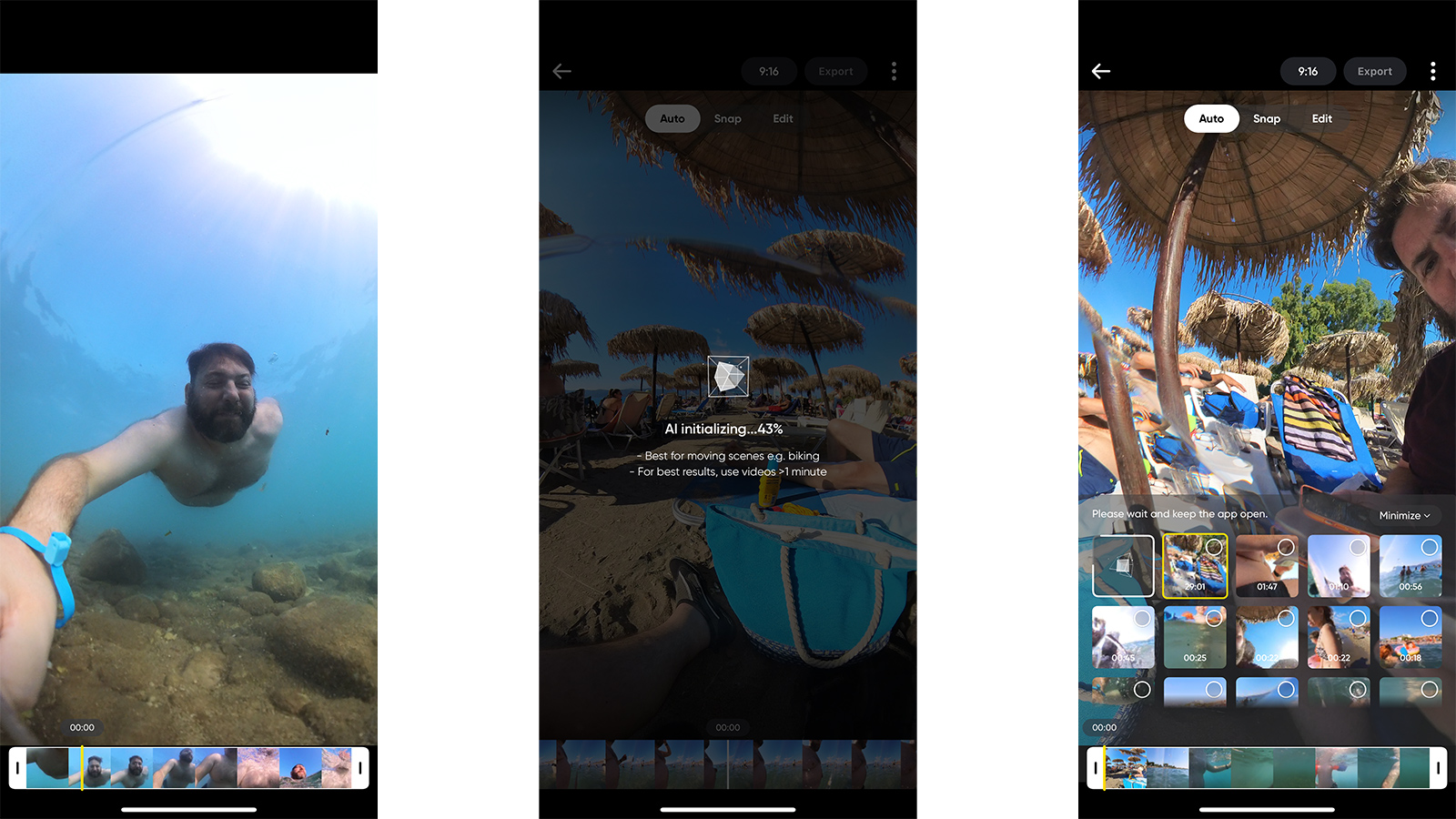
At first I found the stitching didn't seem as good as the Insta360 X3 usually does; it was easy to see the rim of the lens covers – especially when popping through the water surface (inevitably some drips will remain on the optical plastic). The solution I found, however, was to take the clips to Insta360 Studio 2023 on my Mac and press 'Calibrate' in the Stitching menu.
This feature also exists in the phone app so you don't need to resort to a desktop machine. Just don't expect absolute perfection – the camera won't flop, but there is clearly a little room for the lenses to slightly re-direct.

Overall verdict
What this really amounts to is "Should you buy the Insta360 X3 Invisible Dive Case?" and having spent my summer holiday with it somewhat casually playing near the surface of the water, it's easy to say that anyone who enjoys their Insta360 X3 will love it, and keen divers should rush out there, the $100 accessory being easy to justify given the 360-degree possibilities it opens up.
Sure, there were some frustrations with the device. The main one is that because it corrects underwater refraction, it makes above-water images look a little distorted. The other is that, when using the (surprisingly resilient) Insta360 invisible selfie stick underwater (no, I'm not sure I should, but I did) waving the camera around puts a good amount of pressure on the joint and it can come out of alignment. A sensible solution is to use the floating handle, which Insta360 lent us to test the case with. It has the dual advantage of being manageable and air-filled so, should you let go, the camera, case and handle will float to the surface.
Overall, though, if you take your diving even a little bit seriously, then the Insta360 X3's 360-degree photography opens up a new world compared with other action cameras and this doesn't seem too high a price to pay. For more family fun you might need at accept it might need a bit of editing to get the best shots, but it's certainly still a special perspective, even if occasionally imperfect near the surface.
If you're interested in this, you'll also need the Insta360 X3 and, while it is a pretty special action camera, a thorough customer should also check our list of the best action cameras (some that aren't 360-degree) and, of course, our guide to the best 360-degree cameras.

With over 20 years of expertise as a tech journalist, Adam brings a wealth of knowledge across a vast number of product categories, including timelapse cameras, home security cameras, NVR cameras, photography books, webcams, 3D printers and 3D scanners, borescopes, radar detectors… and, above all, drones.
Adam is our resident expert on all aspects of camera drones and drone photography, from buying guides on the best choices for aerial photographers of all ability levels to the latest rules and regulations on piloting drones.
He is the author of a number of books including The Complete Guide to Drones, The Smart Smart Home Handbook, 101 Tips for DSLR Video and The Drone Pilot's Handbook.

